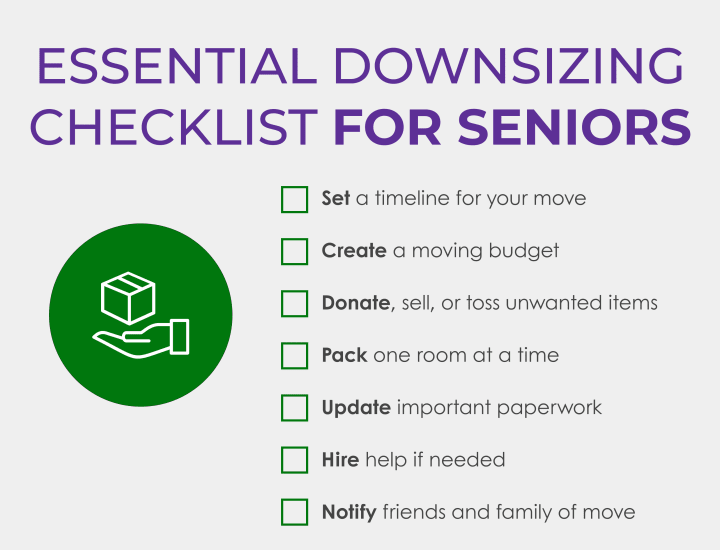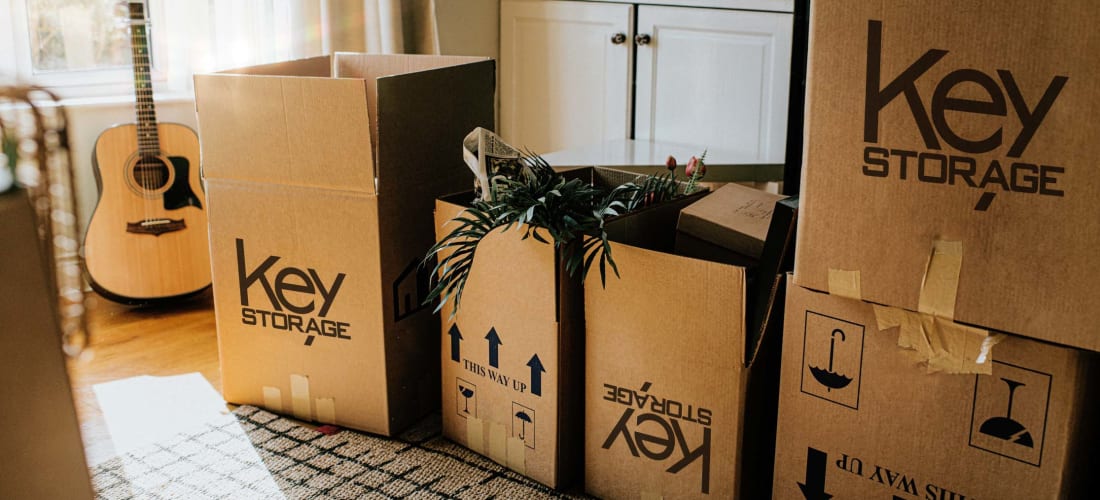The Ultimate Guide to Downsizing for Seniors
Moving to a smaller home is a big step. Downsizing for seniors can be both existing and overwhelming. Whether planning this change for yourself or helping a loved one, this friendly guide will walk you through the process with practical advice that works.
What Are the Benefits of Downsizing for Seniors?
Should You Downsize? Key Factors to Consider
Overcoming the Emotional Challenges of Downsizing
Essential Downsizing Checklist for Seniors
Decluttering and Downsizing Tips for Seniors
Downsize with Confidence
What Are the Benefits of Downsizing for Seniors?
There are many good reasons why senior downsizing makes sense. Let's look at some of the top advantages of downsizing your home:
Less cleaning and maintenance: Seniors downsize because smaller homes need less work to keep clean and maintain. Less work means more time to do the things you actually enjoy.
Lower bills: Smaller spaces cost less to heat, cool, and light. You'll save money each month on bills.
Extra money: Selling a bigger home often puts cash in your pocket. This money can help pay for travel and hobbies or be saved for later.
Less stress: Having fewer things to worry about means less stress in your daily life.
Easier living: One-level homes or places with grab bars make it easier to move around safely. When considering downsizing to a retirement community, many seniors enjoy having friends nearby and planned activities.
Better locations: Moving might mean living closer to family, friends, or places you like to go.
Should You Downsize? Key Factors to Consider
Moving is a big decision at any age, but especially for seniors. Before downsizing, take time to think through what matters most. Here are some important questions to ask yourself:
Health needs: Do you need a home that's easier to get around in? Will you need special features soon?
Money matters: How will moving change your monthly costs? Will selling your home give you money for other things?
Location wishes: Do you want to be closer to family, doctors, stores, or other fun activities you enjoy?
Space needs: How much room do you really use now? Do you need space for hobbies or when family visits?
Upkeep requirements: Is taking care of your current home getting difficult? Are stairs, yard work, or home maintenance becoming too much?
Future plans: Where do you see yourself in 5 or 10 years? Will this new place work for you then?
Community desires: Do you want more people around? Or would you rather have more privacy?
Taking the time to consider your wants and needs will help you make the right choice about downsizing.

Overcoming the Emotional Challenges of Downsizing
The work of decluttering and downsizing for seniors often brings up strong feelings. Here's how to handle the emotional side of downsizing:
Take it slow: Don't rush the process. Give yourself time to sort through memories.
Keep memories, not things: Take photos of special items you can't keep. The memories stay even if the stuff doesn't.
Celebrate what you're gaining: Think about the new freedom and less stress you'll have with fewer things to care for.
Share the stories: As you sort through items, share the stories behind them with family members.
Accept help: Let friends and family help with both the physical work and emotional support.
Find good homes for special items: Giving treasured items to people who will use and love them helps ease the letting-go process.
Get outside help if needed: Sometimes, talking with a counselor can help if you're feeling stuck or very sad about moving.
Remember, your home is more than just the building — it's the life you make inside it.

Essential Downsizing Checklist for Seniors
Use our downsizing checklist for seniors to make your downsizing process smoother:
Set a timeline for your move: Having dates helps keep the process moving forward without rushing.
Create a moving budget: Know what you can spend on moving costs, new furniture, or storage.
Donate, sell, or discard unwanted items: Start sorting items into keep, donate, sell, and throw away piles early.
Notify your friends and family early: Let loved ones know your plans and ask for their help when needed.
Pack one room at a time: Finish one area before moving to the next to avoid feeling overwhelmed.
Update important paperwork: Change your address with the post office, banks, and other essential places.
Hire help if needed: Partner with professional movers, organizers, or services that specialize in helping seniors downsize to make the entire process easier.
Decluttering and Downsizing Tips for Seniors
Ready to tackle your move but not sure where to start? Here are some practical downsizing tips for seniors that real people have used with success:
Start with rarely used spaces. Attics, basements, and guest rooms usually hold items you don't need daily.
Use the one-year rule. If you haven't used something in a year, you probably don't need it.
Measure your new space. Know exactly what will fit in your new home before moving day arrives.
Get rid of doubles. Keep one measuring cup, not three. One winter coat, not five.
Go digital where possible. Scan old photos and papers to save space but keep the memories.
Consider seasonal storage for things you only use part of the year.
Be smart when packing glass and other fragile items to keep them safe during the move.
Sort by must-keeps and nice-to-keeps. Be honest about what you really need versus what you like having around.
Ask for help with hard decisions. An outside view can help when choosing what to keep.
Look into storage options for items you're not ready to part with but don't have room for.
Downsize with Confidence
Downsizing is a fresh start. With good planning and the right help, you can make this change with less stress. Remember that the goal is to create a home that fits your stage of life. Having less stuff to worry about means more time to enjoy what matters most.
If you need extra space during or after your move, check out Key Storage locations near you. A small storage unit can be a big help during times of change.


